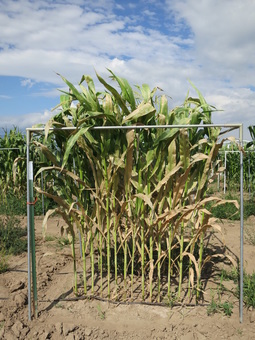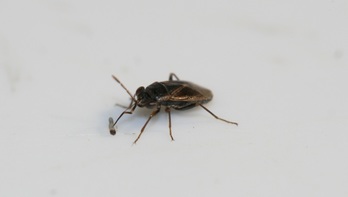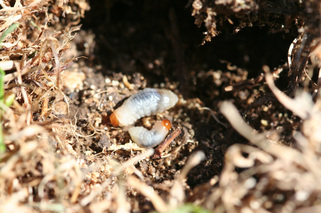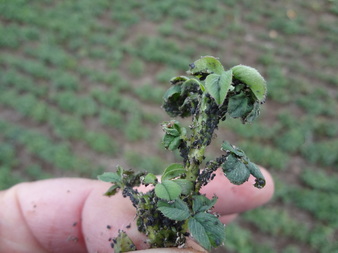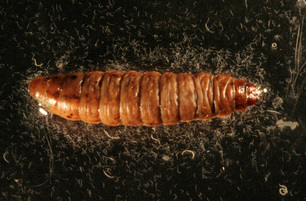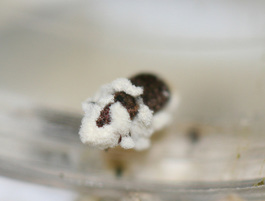Research News
-
News
-
Past News
<
>
2023
Pacific Branch-Entomological Society of America Conference (Seattle, WA) Presentation Award Winner
Congrats to Mo Christman on defending! Best wishes on her postdoc at The Ohio State University!
Congrats to Des Wickwar on her new position (IPM program manager) at the University of Idaho!
Pacific Branch-Entomological Society of America Conference (Seattle, WA) Presentation Award Winner
- Mercy Odemba, 2nd place (PhD 10 min-Talk session)
Congrats to Mo Christman on defending! Best wishes on her postdoc at The Ohio State University!
Congrats to Des Wickwar on her new position (IPM program manager) at the University of Idaho!
2019
National Entomological Society of America Conference (St. Louis, MO) Presentation Award Winner
Pacific Branch-Entomological Society of America Conference (San Diego, CA) Presentation Award Winner
2018
Joint Entomological Society of America, ESC, ESBC, Conference, (Vancouver, BC) Presentation Award Winner
Pacific Branch-Entomological Society of America Conference (Reno, NV) Presentation Award Winner
Morgan Christman receives a USU Ecology Center Graduate Research Award.
Lori Spears recognized as the 2018 USU New Extension Specialist Award winner.
2017
National Entomological Society of America Conference (Denver, CO) Presentation Award Winner
Lori Spears and Ricardo Ramirez are highlighted in The Western Front, newsletter of the Western IPM Center.
Levi Wilkes highlighted for gaining undergraduate research experience in the lab.
Madeleine Dupuy's research and review on billbug management gets press. Steve Price pictured in Hay and Forage Grower magazine for an alfalfa stem nematode article.
2015
Alice Ruckert receives a USDA-AFRI Graduate Student Travel Award to attend the National Entomological Society of America Conference and present her research in Minneapolis, MN.
Pacific Branch-Entomological Society of America Conference (Coeur d'Alene, ID) Presentation Award Winners
National Entomological Society of America Conference (Portland, OR) Presentation Award Winner
National Entomological Society of America Conference (Austin, TX) Presentation Award Winner
Erica Stephens is a recipient of a USDA Western-SARE Graduate Student Grant, see project abstract.
National Entomological Society of America Conference (St. Louis, MO) Presentation Award Winner
- Desireè Wickwar, 1st place President's Prize (MS talk session)
Pacific Branch-Entomological Society of America Conference (San Diego, CA) Presentation Award Winner
- Alan Anderson, 2nd place (MS poster session)
2018
Joint Entomological Society of America, ESC, ESBC, Conference, (Vancouver, BC) Presentation Award Winner
- Desireè Wickwar, 2nd place (Graduate Poster session)
Pacific Branch-Entomological Society of America Conference (Reno, NV) Presentation Award Winner
- Kaitlin Rim, 2nd place (MS talk session)
Morgan Christman receives a USU Ecology Center Graduate Research Award.
Lori Spears recognized as the 2018 USU New Extension Specialist Award winner.
2017
National Entomological Society of America Conference (Denver, CO) Presentation Award Winner
- Kaitlin Rim, 1st place President's Prize (poster session-Biological Control)
- Gunn Gill, 2nd place (PhD poster session)
Lori Spears and Ricardo Ramirez are highlighted in The Western Front, newsletter of the Western IPM Center.
Levi Wilkes highlighted for gaining undergraduate research experience in the lab.
Madeleine Dupuy's research and review on billbug management gets press. Steve Price pictured in Hay and Forage Grower magazine for an alfalfa stem nematode article.
2015
Alice Ruckert receives a USDA-AFRI Graduate Student Travel Award to attend the National Entomological Society of America Conference and present her research in Minneapolis, MN.
Pacific Branch-Entomological Society of America Conference (Coeur d'Alene, ID) Presentation Award Winners
- Houston Judd, 1st place (MS poster session)
- Alice Ruckert, 2nd place (PhD talk session)
National Entomological Society of America Conference (Portland, OR) Presentation Award Winner
- Steve Price, 1st place (President's Prize, MS poster session)
National Entomological Society of America Conference (Austin, TX) Presentation Award Winner
- Madeleine Dupuy, 1st place (President's Prize, PhD poster session)
Erica Stephens is a recipient of a USDA Western-SARE Graduate Student Grant, see project abstract.
Current Research Areas
Impacts of abiotic factors on plant-arthropod interactions:
- Drought stress effects on plant-arthropod interactions
|
Findings
|
- Non-target effects of pesticides
Broad spectrum insecticides can negatively affect predator species diversity that provide natural pest suppression. There is evidence that species rich predator communities can lead to improved herbivore suppression through mechanisms including resource-partitioning and facilitation. The effects of pesticides may go beyond the impacts on species diversity and alter life-stage diversity of predators. Immature and adult predator life-stages may differ in their foraging behavior, prey preference, mobility, among other factors that affect herbivore suppression. We are examining these interactions in the alfalfa system where pesticides are commonly applied for alfalfa weevil management and that often lead to aphid outbreaks.
|
Findings
|
Pesticides have been implicated as one factor impacting pollinator health and declines. It is clear that bees are sensitive to pesticides but the modes of exposure are not always known. Some bee species use soil and leaves as substrates for nest building where residual pesticides may be present. In addition, pollinators can be exposed to pesticides through pollen but work is needed to determine which type of pollen is being used by different bee species. Bee exposure to sub-lethal doses of pesticides may affect foraging and immunity against pathogens.
Understanding herbivore biology and ecology to improve suppression:
Understanding herbivore biology and ecology to improve suppression:
- Herbivore phenology and predictive modeling
|
Findings
|
- Indirect interactions between herbivores
Evaluating alternative IPM strategies for herbivore suppression:
- Entomopathogens as a biological control tactic
- Soil amendments and host-plant resistance
- Re-evaluating pest thresholds for management
Current Research Funding and Collaborations
NSF
- PGRP (2015-2019; $1,069,975) Genomics of resistance in cereals to mite herbivores associated with plant drought stress. (R. Clark (Univ. of Utah), R.A. Ramirez)
- AFRP (2022-2025; $855,164) The compatibility and contribution of natural enemies in western U.S. alfalfa management (R. Ramirez, A. Mostafa (Arizona), R. Larsen (USU), S. Bernhardt (USU))
- AFRI (2019-2022; $462,151) Integrating arthropod and weed management in a water-stressed agro-ecosystem. (R. Ramirez, M. Yost (USU), S. Young (USU), E. Creech (USU), N. Allen (USU))
- AFRP (2019-2021; $299,720) Protecting alfalfa yield from weevil damage in the Intermountain West region. (K. Wanner (Montana State), R. Ramirez, S. Schell (Wyoming), J. Vardiman (Wyoming), E. Meccage (Montana State))
- CPPM (2017-2020; $321,957) Developing innovative IPM tactics for billbug control in urban environments through early detection and non-chemical approaches. (X. Xiong (Univ. of Missouri), D. Richmond (Purdue), R.A. Ramirez, B. Barrett (Univ. Missouri), L. Enders (Purdue))
- AFRP (2017-2020; $250,000) Developing an attractant for Lygus hesperus derived from host plant volatile compounds. (Z. Syed (Notre Dame), J. Brunet (USDA/Univ. of Wisconsin), S. Schoville (Univ. of Wisconsin), R.A. Ramirez)
- AFRP (2016-2019; $250,000) Increasing preventive and curative options for clover root curculio management in western alfalfa. (R.A. Ramirez, L. Godfrey (Univ. California Davis), J. Barbour (Univ. of Idaho))
- AFRP (2016-2019; $246,000) Overhauling alfalfa weevil management in irrigated southwest desert alfalfa. (A. Mostafa (Univ. of Arizona), E. Natwick (Univ. of California Davis), R.A. Ramirez)
- AFRP (2015-2018; $206,000) Re-establishing IPM recommendations for aphids in alfalfa hay in the low desert. (A. Mostafa, E. Natwick, R.A. Ramirez)
- WRIPM (2012-2015; $125,697) Insect-attacking nematodes and water conservation practices as alternatives to insecticides for billbug control in Intermountain West turfgrass. (R.A. Ramirez, P. Johnson (USU), K. Kopp (USU), E. Bechinski (Univ. of Idaho))
- AFRI (2012-2015; $496,126) The causes and consequences of secondary pest outbreaks: direct effects of pesticides on plant defenses against herbivores. (M.D. Eubanks (Texas A&M Univ.), A. Szczepaniec (South Dakota State Univ.), R.A. Ramirez, D. Kerns (Louisiana State Univ.), E. Bynum (Texas A&M), C. Tamborindeguy (Texas A&M))
- SCA (2014-2017; $136,373) The interaction of pesticides with pollinator health and behavior in fruit production systems in the United States (R.A. Ramirez, J.P. Strange (USDA-ARS Logan, UT), T. Pitts-Singer (USDA-ARS Logan-UT))
